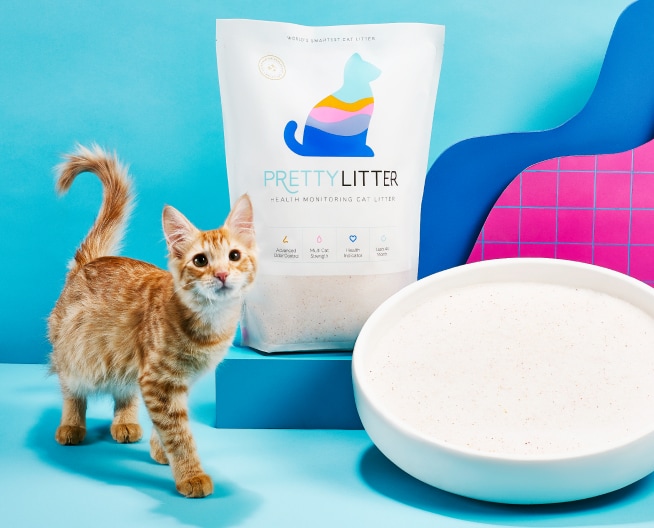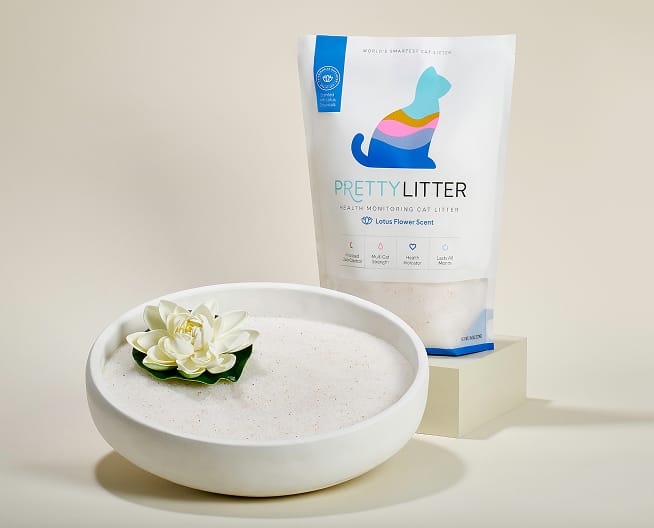October 18, 2017 |7 min read |Veterinarian Reviewed
What’s the Deal With Cats and UTIs?

Written by

Cat urinary tract infections (UTIs) are pretty common in the human world. But did you know that there's a major problem for cats, too?
UTIs in cats can cause serious health problems. Since cats are good at hiding signs of urinary tract disease or urinary problems, it’s up to cat parents to know how to prevent UTIs in cats and train them early.
Here’s what you need to know to protect your fur baby from the agony of UTIs.
Who’s Most Likely to Get A CAT UTI?
Cat urinary tract infections in cats are certainly more common in some groups than others. Young cats, for instance, rarely get UTIs. If a young cat is showing clinical signs of a cat’s UTI, there may be a more serious problem like kidney disease or feline idiopathic cystitis.
A urinary tract problem most commonly occurs in:
- Middle-aged/ older cats
- Female cats
- Indoor only cats
- Overweight cats
- Cats who only eat dry food
- Cats who are not active
However, UTIs in male cats are far more dangerous simply because of male anatomy.
A cat's urethra size differs based on gender, male cats have a narrower urethra than female cats. When a UTI occurs, the bacteria can cause a change in your cat’s urine pH (which some cat litters are able to detect a possible urinary tract issue resulting in the change in PH of the urine.)
High pH can lead to the formation of struvite crystals to form in their urine. If the crystals in cat urine become lodged in the narrow urethra of a male cat, it can cause a urinary blockage (urethral plug). Urinary obstruction is not to be taken lightly!
Urethral issues, specifically a urethral obstruction, is deadly and those clinical signs should be treated immediately by a veterinarian.
CAT UTI Symptoms & Signs
Urinary tract infections in cats are caused by bacteria that travel up the cat’s urethra. Sometimes the bacteria can travel through the urethra into the cat's bladder causing an infection called bacterial cystitis. In severe cases, bacteria can also invade the ureters and cause a kidney infection called pyelonephritis.
To prevent these and other conditions, it’s crucial that pet parents know what to look for when a cat's urinary tract infection first strikes.
When cats suffer from urinary problem or urinary tract disease, they often show signs of difficulty urinating. For example, your cat may feel pain when trying to urinate in her litter box, so she may start to associate the litter box with pain and try to urinate outside of the litter box. Other signs of painful or difficult urination include:
- Visiting the litter box more often than usual
- Spending a longer than usual amount of time in the litter box
- Visiting the litter box but not leaving any deposits
- Bloody urine
- Attempting to urinate in other parts of the house
- Drinking more water than usual
- Not eating as much as usual
It is essential to differentiate the symptoms of a UTI to those of Feline Lower Urinary Tract Disease (FLUTD). FLUTD is a blanket term used to represent a collection of symptoms that could be a result from a number of lower urinary tract problems. FLUTD is diagnosed after ruling out a UTI. There are several causes for FLUTD including
- Struvite crystals, urinary stones, bladder stones and other debris causing a urinary obstruction in the bladder or urethra
- Bladder infection
- Bladder inflammation
- Tumor in, or injury to, the urinary tract
- Stress
Cat UTI Prevention & Detection
The best way to know if your cat is at risk is by using PrettyLitter's health monitoring cat litter. Because bacteria can change the pH of your cat’s urine long before your cat starts showing outward symptoms of a feline urinary tract infection. Find a cat litter that changes color so you are fully aware of your cat's health. PrettyLitter can give you a heads up. If your cat is using PrettyLitter, the granules will turn blue to indicate that your cat may have a urinary tract infection or other health problem.
Taking steps to prevent a urinary problem or tract infection in your cat is crucial. Start by always keeping the litter box clean so bacterium doesn’t have a chance to spread. Your cat’s diet is also a contributing factor. Diabetic and overweight cats are at greater risk of a urinary disease.
Some cats can experience urinary tract disease as a response to stress. Playing with your cat, letting her get plenty of exercise, providing perches and hiding places, and offering at least one food and water bowl per cat are easy ways to reduce stress. If you know your cat is going to be facing some changes in the household - like the addition of a new pet or a baby - make the transition as easy as possible.

CAT UTI Treatment
If you suspect your cat may have a UTI, take her to the vet immediately. Treating cat with a urinary issues or infections can be a simple process if the problem is caught early.
Urinary health is so important for your cat's health overall, catching any symptoms of a UTI will help your furry loved one in the long run. Your vet will likely recommend dietary changes that will prevent UTIs and the formation of crystals in the bladder. If your cat is suffering from a blockage, she will most likely require hospitalization to drain the urinary bladder and safely remove the blockage.
Some cats are more susceptible to urinary problems (such as urinary tract infections) than others and may have a recurrent UTI. A cat that has had one UTI is more likely to have another in the future. Monitor your cat’s urinary tract health with PrettyLitter so you’re always three steps ahead of the problem.
Have a story to share? Read our cat litter subscription reviews and tell us about how PrettyLitter has helped your pet!










